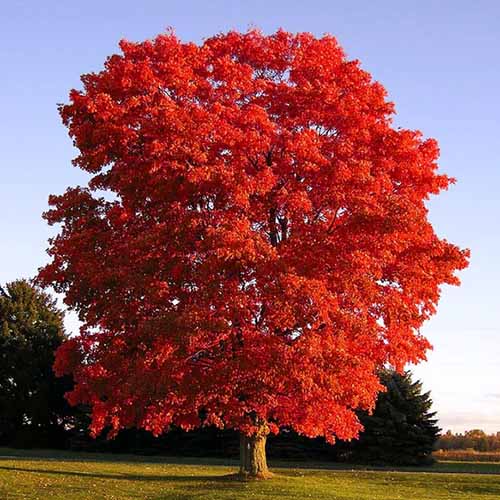The Rich History Of Red Maple Tree
The Red Maple Tree which is scientifically named Acer rubrum possesses a lengthy historical background that extends thousands of years into the past. This species is indigenous to North America where it played a vital role in indigenous cultures before European colonization. The use of them by Native American tribes spanned both practical functions and spiritual symbolism. The initial European settlers quickly identified the tree's worth because they used it to build structures and make furniture while also harvesting it as a food source. The Industrial Revolution marked its status as an essential timber production material because of its fast growth rate and strong durability. The species stands as one of North America's most prevalent forest inhabitants because of its historical significance and exceptional adaptability.
Red Maple Tree Medicinal Uses Through the Ages
The medical benefits of Acer rubrum have been known to traditional healers for many generations. Indigenous tribes created medicinal teas from the inner bark of this tree to address respiratory and digestive health problems. People consumed the sap because they thought it had cleansing properties and helped improve general health. Traditional healers applied poultices made from Acer rubrum leaves to help heal wounds and decrease inflammation. European settlers adopted indigenous methods for using extracts to treat fevers and various diseases. Modern medical practices have largely abandoned herbal treatments such as this one but its historical importance in natural healing continues to form an essential part of its legacy.

When Acer Rubrum Was First Found
The first documented account of Acer rubrum appeared in the 1600s as European explorers recorded this species in their botanical findings. The existence of Acer rubrum in North America predates any historical documentation. Millions of years of fossil evidence show how this species thrived across different climates while evolving through environmental changes. The ability of this species to thrive across diverse soil types and extensive geographical areas established it as a dominant force in early forest landscapes. The 18th-century surge in scientific classification had already recognized this species for its resilience and beauty through extensive study and admiration.
Red Maple Tree A Versatile Choice for Landscaping
Landscapers often select Red Maple Tree because its appealing appearance combined with its flexible growth characteristics make it an ideal choice. Urban environments along with parks and residential areas often feature this tree because it provides excellent shade coverage while improving exterior attractiveness. It stands out as an easy-care landscape addition that combines both elegance and durability. The tree showcases stunning autumn foliage with warm colors which attracts gardeners aiming to bring seasonal beauty to their landscapes. The extensive root system of this plant stabilizes soil and prevents degradation which makes it a common choice for erosion control in vulnerable areas.
The Unique Aesthetic of Acer Rubrum
The Red Maple Tree stands out for its graceful form and colorful seasonal changes. The tree starts with a straight and slender trunk covered by smooth gray bark, which develops into a rougher and furrowed exterior as it ages. The leaves of this tree maintain a bright green color during spring and summer before they transform into vivid orange, yellow, and deep crimson tones throughout the autumn. Tiny flowers begin to show at the start of the growing season and create subtle beauty until their winged seeds appear. This tree stands as a stunning centerpiece or enhances woodland diversity to create an extraordinary landscape.
Rare Wildlife Drawn to The Red Maple Tree
The Acer rubrum tree offers critical support to multiple wildlife species in addition to its aesthetic beauty. Numerous species find habitat and sustenance here including rare pollinators and migratory birds. Its leaves function as the main food supply for particular moths and butterflies when they are in their larval development stage. The tree draws in different woodpecker species, songbirds and small mammals which consume its seeds and sap for nourishment. The damp habitats where it grows provide essential shelter for amphibians and insects which help sustain a dynamic ecosystem. This species acts as an ecological asset by contributing to a dynamic habitat with rich biodiversity when present in a landscape.
The Red Maple Tree remains an essential component of North American natural and cultivated landscapes because it provides both aesthetic appeal and ecological advantages that persist through multiple generations.